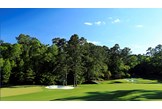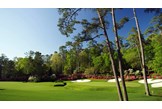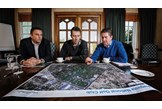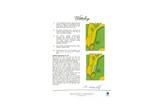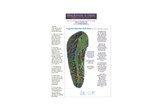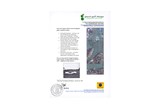What the architects would change about Augusta
Published: Last updated:
It has been ranked as the best course on the planet. Last year, a poll of PGA Tour players named it the best course they play all year. Holes have been copied all over the world, while designer Alister MacKenzie is still revered for his work there. But can Augusta National be improved? What would a modern course designer do if he was given the task of making it even better? Three leading architects provide the answers.
Meet the architects:
 |
JONATHAN GAUNT |
 |
MARC WESTENBORG |
 |
MARTIN EBERT |
What surprises you about Augusta?
Jonathan Gaunt (JG): The number of ‘blind’ shots players have to play, though that doesn’t really detract from the way the course plays, with some pros hitting the ball beyond the brow of the hills. Playing up to the 18th you don’t see the bottom of the flag do you? And it’s the same with the 9th; if your ball is at the bottom of the hill, from there it’s quite a steep climb uphill, something you don’t realise or appreciate watching on TV.
Marc Westenborg (MW): I’m not sure about the elevation change on the 18th, but I would guess it’s around a 30m difference, while the landing point on the 10th is a big drop below the level of the green.
Martin Ebert (ME): They obviously had to cope with massive elevation changes with the routing, but produced 18 great holes. Whenever you get that change of elevation it’s a question of how you gain the elevation back without creating ridiculous holes; nobody would say 9 and 18 are ridiculous holes to get back up to the clubhouse.
With so many changes over the years, the course looks and plays differently nowadays. Your thoughts on that?
MW: It has been changed since the day it opened. It was initially supposed to be a St Andrews-style pitch and run course but that didn’t last long.
ME: I think it’s refreshing you’ve got conditions around the greens where you can play different shots. Ok, the grass type is going to affect the way you can closely mimic links golf but at least you don’t have thick rough round the greens so players like Seve can exhibit his skills – somewhat different to the US Open, Pinehurst excepted.
JG: When Seve first played there in the early 1980s I’m sure they had a different grass type on the greens.
MW: Yes, it used to be Bermuda grass but they changed it to bent.
JG: Changing to bent had a massive impact on the playability of the greens.
MW: They had to soften the greens owing to the undulations and speed created by bent.
JG: In old footage you’d see shots into the greens and the ball would stop fairly quickly: now it’s like playing down a marble staircase!
So are the greens just exacting – or unfair?
ME: If they play the tournament and get four flag positions for four days then that serves a purpose. But they’re constantly looking at them aren’t they? That includes shaving the undulations down a bit if necessary.
JG: It would be interesting to play the course out of the tournament to see how it compares in terms of playability, if the greens are still running at 13 or 14 on the stimpmeter.
ME: It would be tough to think they’re 14 with some of the slopes they’ve got – you wouldn’t be able to stop the ball at that speed. The original description of the greens was that they were large – 32 yards in width and 30 yards depth, or the other way around – although when I made my first visit I actually thought they’d be bigger. They were smaller and the contours less severe than I expected. I noticed there weren’t many flat areas on any greens, so once the ball is in motion it doesn’t want to come to rest – the 2nd is a prime example. I guess they’re on the limit when choosing pin positions – they must take a lot of care over those.
What are your views on the bunkering?
ME: Again, it’s refreshing there are substantially fewer than 50 fairway bunkers.
MW: Let’s have a count… 12. Remarkable.
ME: It says in the early plans ‘there will be less than 30 traps, with trees, streams and mildly rolling fairways providing hazards.’
JG: So maybe you can question whether every single bunker has a purpose? Ok, there are only 12 fairway bunkers but you’ve got four on one hole (3rd) and a huge one on the 9th.
MW: But not every single bunker has to have a purpose. It can just be a visual thing.
ME: I wonder, if they came back, what Alister MacKenzie and Bobby Jones would think about the pristine bunkering… and whether they’d be entirely happy with the change of style and shapes from the early days to today?
MW: All that’s left of the MacKenzie influence is the routing, nothing else really to remind you it was the handiwork of the great man.
JG: I think the greenside traps are so cleverly positioned. If you haven’t got your drive or approach in the right position you quite easily end up spinning off the green and possibly into sand without really playing a bad shot.
Is it golfing perfection, or not?
MW: I’m going to be controversial here, but the course is protected predominantly by the contours of the greens and maybe that is a bit one-dimensional. More perhaps needs to be done to add a little more strategy off the tee; one or two more carries or cross bunkers or something like that to add a bit of spice.
ME: It’s a bit like the Old Course, which many unfairly say is just a putting competition. But, in my book, the Old Course is a great test of the long game too – the players who have won there tend to be the best players in the world and hit the ball best from tee to green because they’ve given themselves shorter putts. Similarly, at Augusta the course rewards good long play as well as skill round the green.
MW: Yes, and the shorter the irons into those greens the better.
What about the set-up for the Masters?
ME: Zach Johnson won when I went and it wasn’t the most thrilling Masters but that was more due to the cold conditions. They’ve got a committee who try to ensure, as much as possible, excitement; the set-up promotes birdies and eagles as well as catastrophes.
JG: The way design develops and the reason for so many changes is related to tournament golf and so-called demands of the public. Maybe they should reduce one of the par 5s and make it a par-70 tournament?
ME: The Masters is all about good scoring on occasions and disasters on other occasions. That’s all part of its fascination and it’s very rare that it’s not an exciting tournament.
Has Augusta affected your own work?
JG: I’ve planted rhododendrons on some courses!
ME: Whenever you see great greens which determine how the course plays and its challenge, it influences you, subconsciously or not. It gives you the precedent to introduce undulations to greens – though you can’t go too crazy by producing similar greens on a normal layout. That would be over the top. The classic green, for me, is 14 – there are a number of different areas on that green.
What’s so special about Amen Corner?
ME: It comes at a perfect time in the round. It can swing so much at that point and there’s still time afterwards for last-gasp heroics.
JG: It comes down to clever routing and the way Rae’s Creek runs through it.
MW: I’m not sure whether it’s true, but I heard the 13th was the first put in place and some of the course was worked around it, as it was so natural. If so, it was a good decision. No other course has such a well-known sequence.
Which, for you, are the most strategic holes?
JG: Although I’ve suggested a change, I’d say the 9th which you play down into the valley and the further down the hill, the higher you play into the green for the second shot, likely to be from a tough downhill lie. You may dislike the fact you can spin off the front of the green but what about if you spun off into the bunker? This is why I’ve made this suggestion.
MW: Best hole for me is 12 but there’s not too much strategy involved so I’ll opt for 13. Like Jonathan, it’s a hole I’d tweak.
ME: The 13th too. It requires a drawn drive and a faded second shot into a green over the creek – two testing shapes of shot, leading to a green cascading down to the stream.
Is Augusta National the benchmark?
MW: Not for me. Courses are said to be not ecologically friendly, being blots on landscape – Augusta is a good example of that. For me, it gives the impression of being a manicured area of ground which doesn’t blend into the natural environment. It’s an American-style parkland, a fantastic course, but doesn’t give the right impression at times.
ME: You must bear in mind what it was before, a tree nursery, so it’s not a natural landscape. I went with a love of natural golf, but came away so impressed with what they’ve achieved there.
The architects’ suggestions:
Martin Ebert suggests widening the fairway of the 11th to encourage more adventurous approach shots – yet retaining its exacting nature by adding a fairway bunker in the right-centre.
Jonathan Gaunt has suggested bringing the bunker on the 9th further into the centre of the approach – as well as returning it to the shape of the original – so it changes the strategy slightly.
Marc Westenborg would widen the creek and add some new trees to add more difficulty to the 13th. This would make it more of a decision in terms of going for the green of this short par 5 in two.

